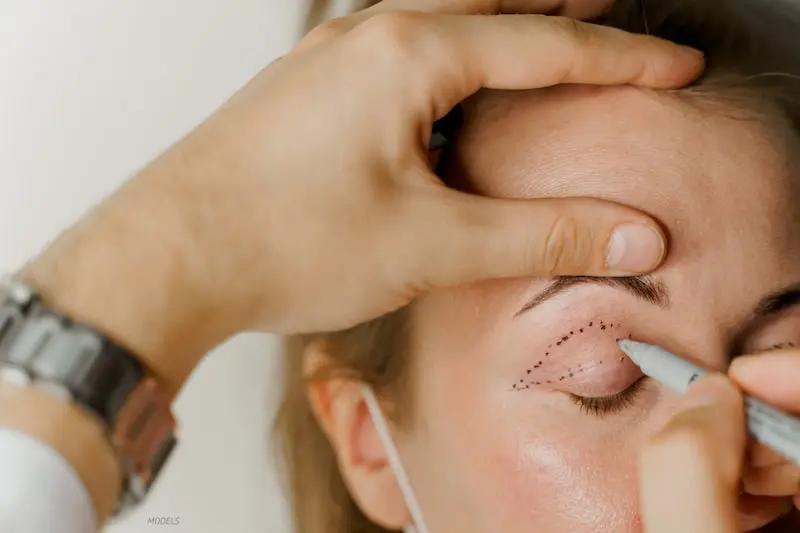The skin around the eyes can undergo changes over time. For some individuals, this may mean the upper eyelids begin to droop or feel heavy. This can potentially affect the upper field of view. Others may experience puffiness or bags under the eyes, which can create a tired appearance. Understanding the relationship between eyelid anatomy and visual function provides a basis for exploring procedures designed to address these changes, such as eyelid surgery.
What Is Eyelid Surgery?
Eyelid surgery is a surgical procedure performed on the upper eyelids, lower eyelids, or both. The objective is to remove or reposition excess skin and fat and sometimes tighten the underlying muscle tissue. This adjustment aims to modify the contour and appearance of the area surrounding the eyes.
Surgeons typically perform this procedure by making small incisions. For the upper eyelid, the incision is often placed within the natural eyelid crease, which can help conceal the scar. For the lower eyelid, the incision might be made just below the lash line or on the inside surface of the eyelid. Through these access points, the surgeon can carefully adjust the tissues to achieve the intended result. Depending on the specifics of the procedure and the patient’s health, eyelid surgery may be performed using sedation or under general anesthesia.
What Does It Address?
A qualified surgeon can determine if an individual is a suitable candidate for eyelid surgery. People seek consultations for this procedure for various reasons, both functional and cosmetic. A common motivation is drooping upper eyelids, which can sometimes obstruct the peripheral or upper visual field, making activities like reading or driving more challenging.
Other candidates might include those who have experienced long-term effects from allergies, leading to persistent puffiness and stretching of the eyelid skin. Age-related changes are another frequent reason for seeking a consultation, as skin elasticity diminishes over time. The surgeon evaluates each person’s unique anatomy, health history, and goals to provide a professional assessment of their candidacy.
What Should You Expect?
The process for eyelid surgery typically begins with a detailed consultation. During this meeting, a surgeon will conduct a thorough examination of the eyes and surrounding facial structures. This assessment often includes photographing the eyelid from various angles to document its condition before the procedure.
On the day of the procedure, after anesthesia is administered, the surgeon makes minimal incisions, usually along the natural folds of the eyelids. Through these incisions, the surgeon will remove or reposition excess skin and fat, and may adjust the underlying muscles. Once the desired modifications are complete, the incisions are closed.
The recovery period that follows involves a specific set of care instructions. Swelling and bruising around the eyes are common and typically peak within the first few days before gradually subsiding. Following the surgeon’s post-operative instructions is fundamental for a smooth recovery. These instructions often include using cold compresses and keeping the head elevated. Follow-up appointments will be scheduled to monitor healing and remove sutures.
Speak Further With a Surgeon
A personalized consultation with a board-certified surgeon is the next step for anyone who wishes to learn more about eyelid surgery. This meeting provides an opportunity to receive information tailored to your specific anatomy and circumstances. A surgeon can offer detailed insights into the process, discuss your aesthetic goals, and provide a clear picture of what the procedure entails.





